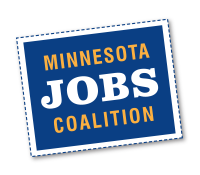Stateline: The End of ‘No New Taxes’ in Minnesota
Jake Grovum
Stateline
March 19, 2013
ST. PAUL, Minn. – For more than a decade, one mantra dominated the state capitol here: No new taxes. It was the guiding principle of former Gov. Tim Pawlenty and the unofficial campaign slogan of the Republicans who swept into power in 2010, taking total control of the legislature for the first time in decades.
That era is over.
The 2012 elections ushered in a significantly altered political environment here, one that provided Democratic Gov. Mark Dayton, elected in 2010, with friendly majorities in both chambers. For the first time since the 1980s, Democrats (known locally as DFLers, for Democratic-Farmer-Labor Party) hold all three levers of power in the capitol.
Now the debate in this legislative session isn’t over whether to raise taxes, but by how much. More than that though, the DFLers in power see an opportunity. They talk of “reinvestment” and undoing what they see as the damage done by a decade of stagnant budgets and an outright refusal to raise taxes.
Part of the challenge will be to manage these expectations and the appetite for more spending. Advocates and lawmakers alike believe that the standard of living in the state has truly declined over the last decade or so. This session, they say, is a chance to reverse course.
“I don’t think folks want the status quo, and that’s where we’re cutting all these big things,” said Rep. Paul Marquart, chairman of the education finance committee. “This idea that we just cut, cut, cut because we’re always in a financial crisis and we don’t make the investments we need; that’s going to leave Minnesota in a downward spiral.”
House Speaker Paul Thissen echoed that. “If these trend lines continue, we are going to be in trouble,” he said. “I really do think we have a moment here.”
But seizing the moment will depend on whether DFL leaders in the legislature and Dayton can sell their plan – both the spending, and the taxes – not only to the public at large but to their own members who will need to cast the votes.
Reversing Gears
It’s been more than a decade since the state enacted any broad-based tax hike, except for raising the transportation-dedicated gas tax after a major interstate highway bridge collapsed into the Mississippi River in Minneapolis killing 13 people — an effort that required Republicans to override a Pawlenty veto. Along the way, the state saw two government shutdowns and narrowly escaped a third.
“Minnesota’s been cutting back. They’ve been under this for a decade now,” Dayton said in an interview. “People are saying that’s not the way.”
But total control over government hasn’t garnered Dayton lock-step support in the legislature, or the public for that matter. There’s support for his plan to spend more, specifically on education and to implement all-day kindergarten. How to pay for it all — in other words, raising taxes — is at issue.
Dayton’s first budget this session was met with varying degrees of skepticism and outright revolt, even from some in his own party. A business community that bristled over his 2010 campaign pledge to raise taxes on the wealthy was now apoplectic over a proposed overhaul of the state’s sales tax system that would have levied fees on services, in particular, transactions between businesses. A late February tax committee hearing on the proposal lasted past midnight, spanned two days and featured more than 100 testifiers, more than many could ever recall being assembled for a single bill.
That plan has since been scaled back, mostly because the state’s fiscal outlook improved and nearly halved the state’s projected budget deficit, from $1.1 billion to $627 million. In response, Dayton dropped his sales tax proposal in a revised budget released last week, focusing instead on a plan to tax the rich, among other changes. He would create a new top tier tax bracket of 9.85 percent for individuals earning more than $150,000 and couples over $250,000.
Overall, the new budget would raise taxes by $1.8 billion.
That seems to have tempered the opposition in the legislature, if not the general public. “It didn’t surprise us that he backed away from that,” DFL Rep. Alice Hausman, a 13-term lawmaker, said of the sales tax plan. “But there’s still a fairly strong, united belief in raising that progressive income tax.”
Hurdles Ahead
Republicans aren’t inclined to make that easy, though. They cite the state’s recovering economy, lower-than-average unemployment rate and improved fiscal outlook as support for their approach to governing.
“We can’t ignore why this happened,” House Minority Leader Kurt Daudt said after the better-than-expected forecast showed a lower budget deficit. “We get to look back at history and say, ‘That worked.’”
The groundwork has already been laid for a political backlash against those who raise taxes. A number of DFLers hold seats in wealthy suburban districts where a tax on high earners is less of an abstraction than it is elsewhere. Republican operatives and the business community have coalesced around an effort called the “Minnesota Jobs Coalition” to fight the hikes. Grover Norquist’s Americans for Tax Reform has also registered a satellite fund in the state, although it’s been quiet so far.
But DFLers appear steadfast. The revised tax hike proposal helped, and lawmakers are expected to unveil their own budgets this week. Leaders in both chambers say the drive for reversing the trend of the last 10 to 15 years is strong enough to quiet worries about raising revenues.
“People were paying attention,” Senate Majority Leader Tom Bakk said, calling the 2012 election results a mandate from voters to raise taxes on high earners. “Those people knew they were handing state government over to Democrats.”
Thissen, the House Speaker, agreed. “We weren’t shy about taxes,” he said, recalling the last campaign. “Voters heard us say that.”
To make that case, supporters of the spending and taxes point to statistics showing the state has slipped nationally in education funding. It also has a yawning achievement gap and crowded classrooms. They blame skyrocketing tuition at public universities on state funding that, when adjusted for inflation, has been stagnant or fallen for decades.
The reality is, though, that the state still faces a $627 million deficit this biennium and about $800 million in debt to its schools because of an accounting maneuver used to balance the budget in recent years. That’s not lost on Dayton and the DFL leaders, as they frequently cite those challenges before talking about new programs and spending they had in mind this session.
And for the Republicans, what’s already on display from the DFLers is nothing more than GOP warnings about tax-and-spend liberals come to fruition.
“They just believe that you’ve got to have more taxes so you can grow the size of government,” said Senate Minority Leader David Hann, a potential Dayton challenger in 2014. “There’s nothing in this this budget that’s reform-minded at all.”
Seeking Support
That argument captures what DFLers face as this year’s session continues: creating support for the plans that they say carried them into office in November. A recent Minneapolis Star Tribune poll found a majority back a tax hike on high-earners. Support for other kinds of tax increases – on clothing and alcohol or services, for example – faced more opposition.
“Anytime you try to change things you have to overcome those reservations,” Dayton said. “But we’ll see.”
Along with making the case for taxes, though, DFLers will also be making a broader argument that runs counter to thinking during the brief GOP rule: that government costs money, sometimes a lot of it, and is worth paying for. At a time when polls show the public generally supports budget cuts and “smaller government,” that could be a tall task.
“We need to make investments,” Thissen says. “It doesn’t just take resources, but it does take resources.”



